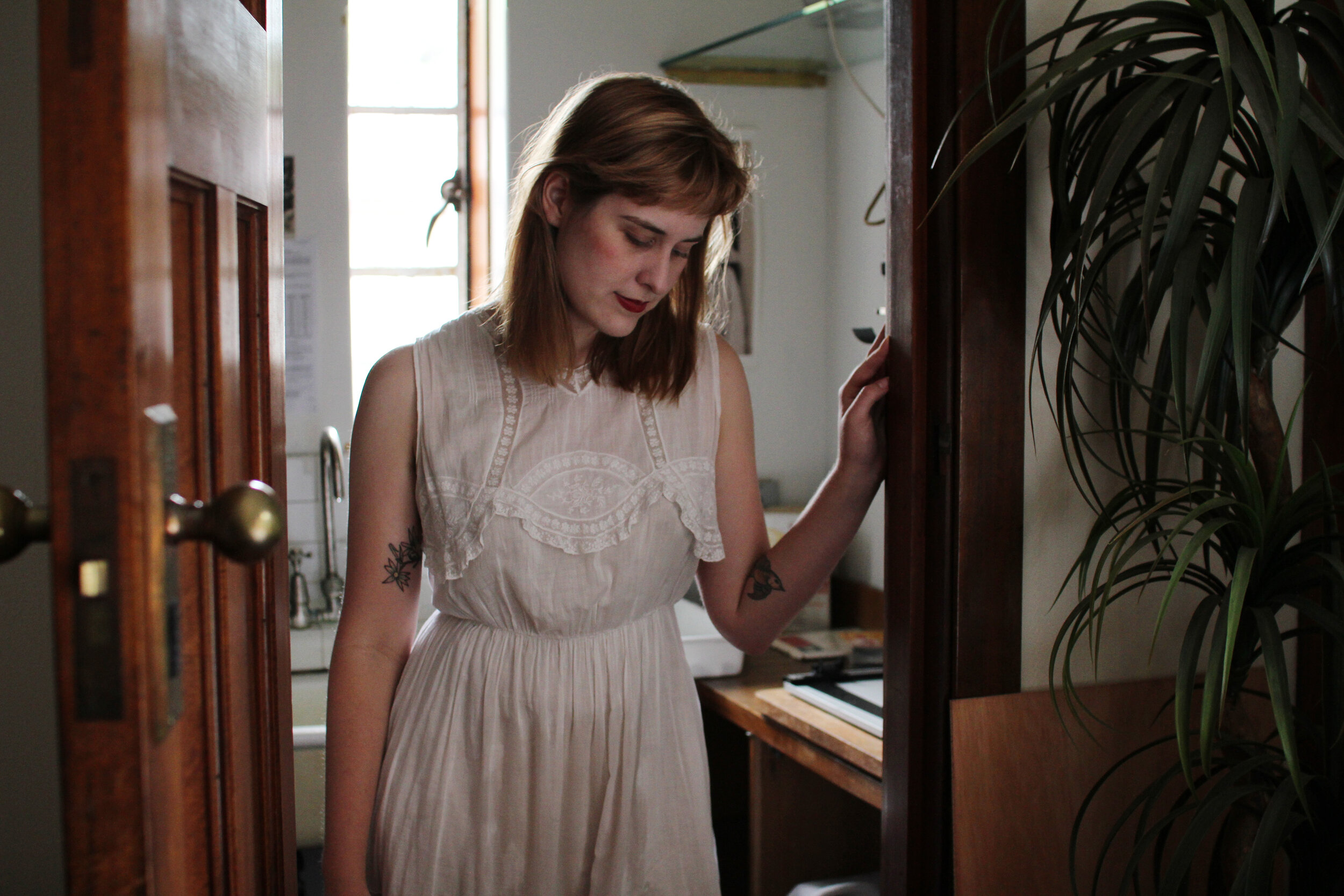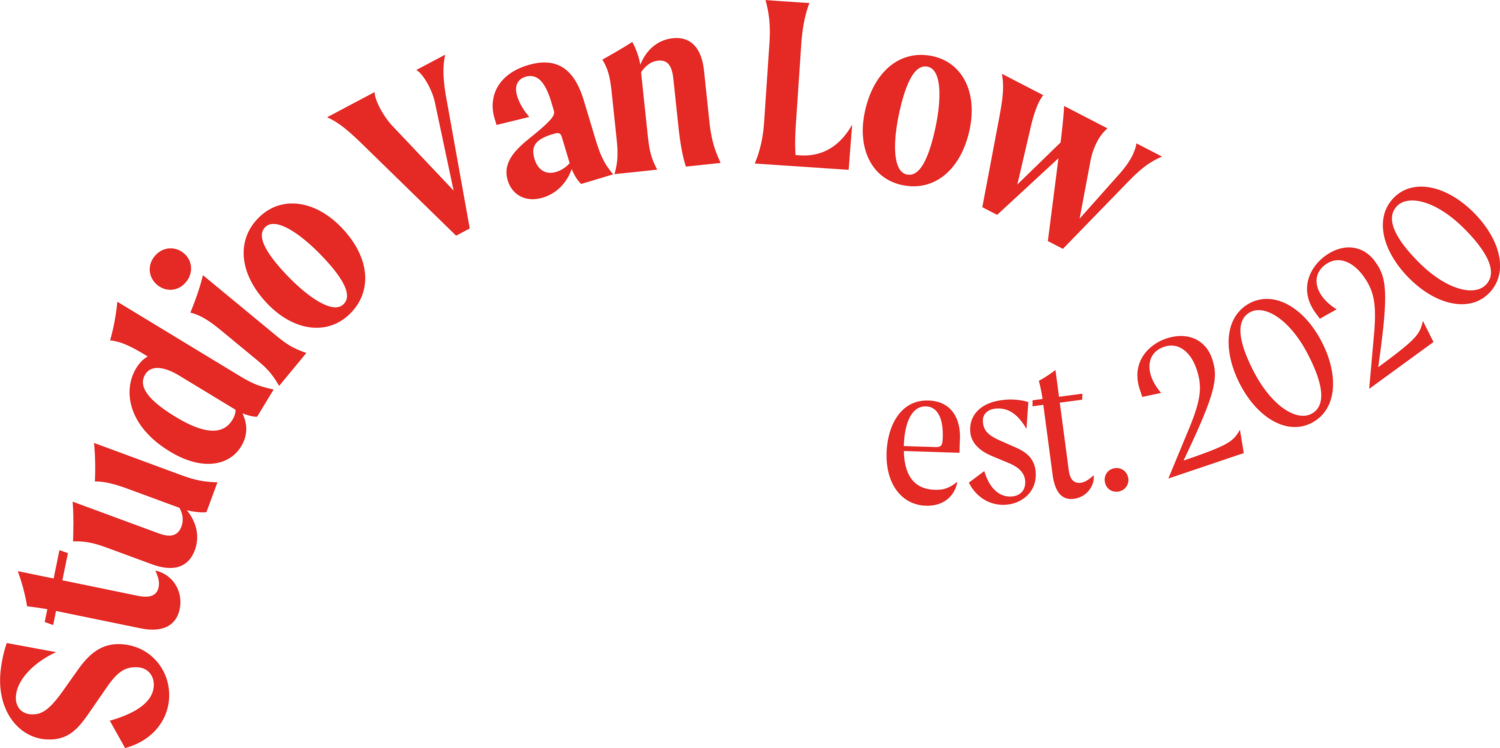Eloise Maree Crossman
Published on The Monday Issue, April 2016
Eloise Maree Crossman, like her images, is both soft and sharp.
Often dressed in vintage cloths, and always with rosy cheeks, Eloise herself is somewhat of a dreamy figure of an era past yet our conversations are always filled with blatantly honest criticism and punctuated by biting self-deprecation. Having studied at Sydney Film School, Eloise is a talented video editor. However, her creative practice is driven by analogue processes – medium and large format photography, multiple exposures on film, darkroom processing and hand painting. In anticipation of her upcoming tintypes workshop (held in collaboration with Sophie Caligari Photography), I visited her home/studio/dreamscape in Blackheath to discuss her work and to stickybeak around her newly converted darkroom.
My name is Eloise, and I am a still (and moving) image artist from the Blue Mountains, via Sydney. My art practice involves 35mm, medium format and large format photography and alternative processes. I am an artist because I’m impractical.
Vanessa Low: How did you develop your interest in photography and image-making?
Eloise Maree Crossman: I have a background in film and digital art and museum studies. Having used 16mm film and Bolexes and Steenbecks at film school and university, I love both film and analogue photography and image-making.
VL: Your work draws on visual styles that are often associated with Romanticism; your photographs are often dreamlike or have a sense of melancholy or the sublime. Could you tell us a bit more about this
EMC: My work is instinctive, unreasoning and earthy, as well as light and dark; the real and the imaginary and the conscious and unconscious, for example. I’ve always been big on the whole idea of my work de-rationalising nature in contrast to botany and scientific inquiry into nature. I have an interest in approaching nature in the way of a person beguiled by the insurmountableness of it, which is a very Romantic view. There’s a certain movement in art now which is embracing this attitude. I feel like a lot of artists are re-engaging with nature and plants and the meaning they have for individuals; I guess I’m part of that movement. For example, Zio Baritaux’s Strange Plants, which is a good example of how artists are exploring nature in a contemporary manner.
VL: Having studied a Diploma of Screen and Media at Sydney Film School, you are adept at creating and editing moving images, yet you often work with analog photographic processes such as developing your own film and printing your own images. What draws you to these very different image-making processes?
EMC: I’ve always worked with film (whether at film school, university or as a photographer). Simply, I like things that are perceptible by touch.
VL: Can you tell us about your darkroom, which you set up yourself?
EMC: I repurposed a butler’s pantry in my old, sprawling house into a darkroom, yes. I’ve just enough space and a sink for painting photographic emulsion onto surfaces, developing film, and playing with my Opemus enlarger.
VL: Your images are often whimsical and capture small, ephemeral moments. Describe how you go about creating these images.
EMC: Larger apertures, closer focusing distances, a shallow depth of field and my Hasselblad 500 C/M and film back are my best friends.
VL: Tell us about your new tattoo.
EMC: It’s Actinotus helianthi (the Sydney Flannel Flower), designed by my best friend Caitlin Shearer and tattooed by Sophia Baughan.
VL: You have a signature style; who are you influenced by; do you have any particular movements or people you follow?
EMC: I love the works of Olive Cotton and Max Dupain and am Sally Mann-obsessed at the moment.
VL: How does living in the Mountains affect your creative practice
EMC: My backyard is a constant source of creativity (and the Campbell Rhododendron Gardens, too). When I lived in Sydney, I was always travelling from home to far away places like the Blue Mountains or in the North Shore or in Victoria to seek inspiration and photograph subjects, but now that I live in the Mountains, I need only walk out my front door or into my backyard. Blackheath, were I live, is situated directly in a national park. Everything is so much more attainable and flexible.
VL: You’re also interested in the history of the Mountains; what’s something interested you’ve learned about the area?
EMC: So many writers and artists have lived and worked in the Mountains, such as Norman Lindsay and Rose Soady, and Eleanor Dark. (I think I may be Rose Soady’s metempsychosis.)
VL: Is there anything you miss about living in the city?
EMC: Propinquity.
VL: What is a challenge you face when creating your work?
EMC: Money, sadly.
VL: What techniques, themes or ideas are you working on next?
EMC: I’m allured by the curves and contrasts of the human figure and would like to experiment with tintyping and ambrotyping nudes next.
VL: You have some tintype portraiture events coming up. What are the details?
EMC: Sophie Caligari Photography and I are tintyping at the Gangster Ball and the Charleston Challenge and Long Lunch and Shanghai Nights at the Hydro Majestic Hotel on the 5th and 6th of February, at the Mad Hatter Tea Party at the Carrington Hotel on the 7th of February, and at the Wentworth Caberet at the Blue Mountains YHA on the 20th (other dates and events TBC).


